I woke up at 5:40 AM, and despite being dead tired after our half-day part-walking, part-by-bus trips to the endless places of interest in hilly Athens, I was in an upbeat mood that early Tuesday morning. Today, we’ll visit the ancient and enigmatic Oracle of Delphi.
Here are my notes on the trip:
May 3– I woke up at 5:40 AM and watched a replay of the Dallas Mavs vs. Phoenix Suns semis game one via my FireTV 4K Stick while having coffee (I used five decaf pods on the percolator). I showered by 6:10 and then ate a piece of cookie along with the leftover spanakopita from last night’s dinner at a restaurant in Monastiraki Square, which overlooks the Parthenon atop the Acropolis.
We were out of the hotel by 7:08 AM and created an email to my younger brother back in the U.S. while we waited for our tour bus. Key Tours operated the trip, and the bus finally arrived at 7:26 AM.
We were whisked out of the city by 7:35, and Ruby paid the driver our fare (€108—about US$115 per person) via a Wi-Fi credit card reader after he made the first of his many stops inside the city proper to pick up more passengers.
From 7:47 until about 8:28 AM, the bus made four more stops and picked up 16 more passengers as it meandered around the city proper. All the while, the bus seemingly looked to be on its way to the first highway that would take us to our destination — the ancient town of Delphi.
From the Dorian Inn Hotel, we stopped at a square at the corner of Xenofontos Street and Filellinon that overlooks two government-owned glass and steel buildings with huge Greek signage. One of the buildings houses the Ministry of Tourism. The other building appears to be related to their pension system, similar to the Social Security Administration in the U.S.. From here, the route continued to the Temple of Olympian Zeus.
After the last passengers were picked up, our tour guide, Mariana, started talking on the bus’s PA system. We’re aboard bus #1 (Setra). The bus finally made its way down the road to the highway. I tried to read some information about the Oracle of Delphi on my phone – thanks to the eSIM I purchased for $13 (5GB of data, valid for a month covering all of Greece) before our trip. There’s a bit of traffic inside the city near the new Archaeological Museum, along Andrea Syngrou Avenue. It’s now 8:35 AM.
It looked like it would be a long day as we encountered some traffic near the approach to Hadrian’s Arch and Temple of Olympian Zeus at about 8:46 AM. We passed along the Zappeio Roman Baths and St. Paul’s Anglican Church, where the Seven Hills of Athens seem to congregate. Our guide quickly pointed out that only Lycabettus Hill has a funicular for the physically challenged traveler.
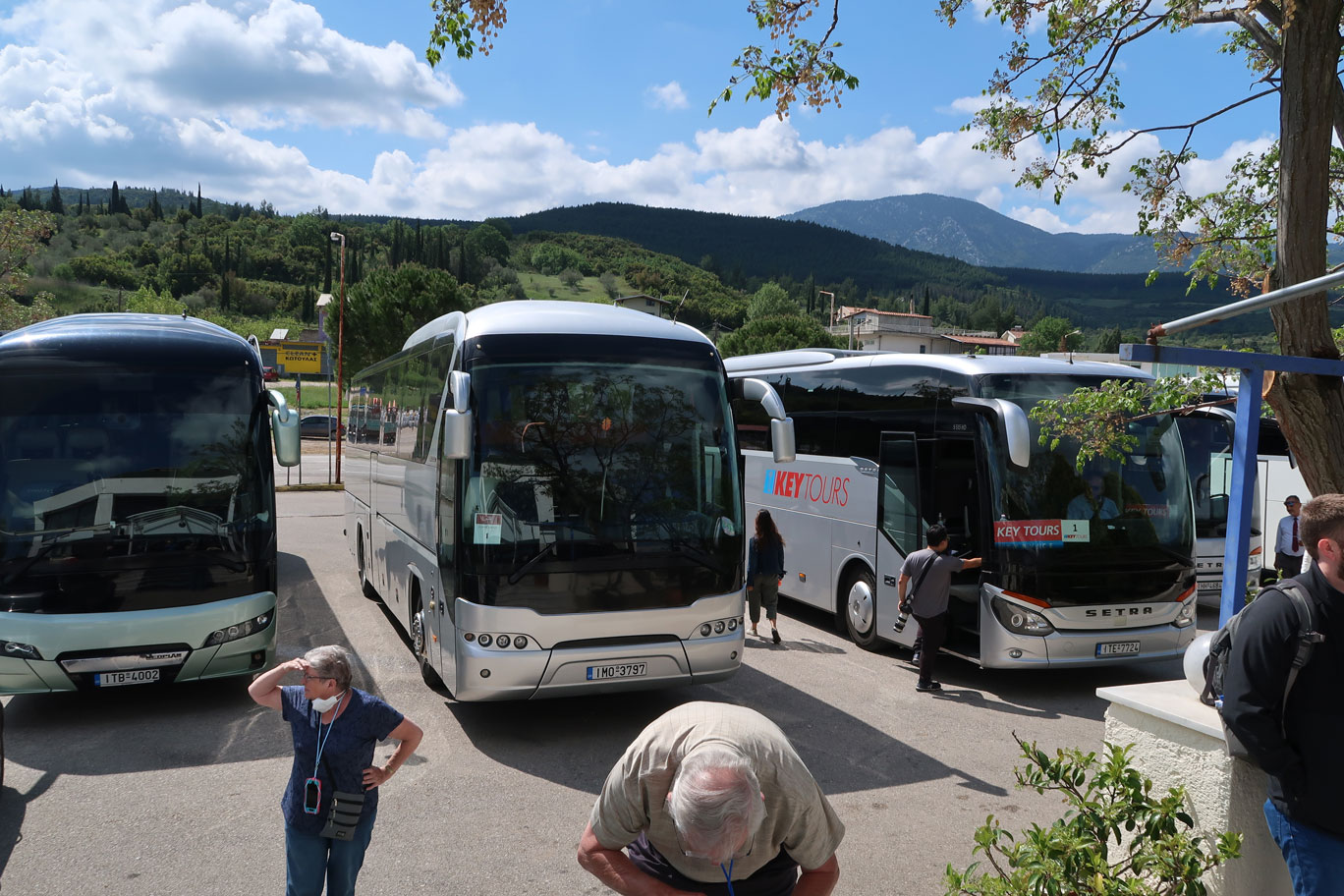
By 8:50 AM, the bus had snaked through Greece’s morning traffic, along University Street with its numerous ancient Greek buildings and educational establishments. We then followed the north exit of Athens to our destination.
Our tour guide informed us that our first stop would be in Livadia for a coffee break. Once in Delphi, the first part would be visiting the Temple of Apollo on Mount Parnassus (Parnassós in Greek). Then there would be an hour-long tour inside the museum and lunch at the ‘Symposium‘.
Hearing the word, my mind briefly got muddled about whether we’d have a meeting and not lunch at the place—truly Greek, in every sense! Our guide added that near the valley, on the way up to Mt. Parnassos, we might be able to see some snow and that there will be some stops for photo-taking along the way.
It’s already 9:03 AM, but we’re still on the city’s outskirts. Our bus would cover about 400 kilometers or 250 miles round-trip.
We were out of Athens by 9:11 AM, near an industrial area with numerous pharmaceutical offices and a Coca-Cola factory—they seem to be near each other in most places in the world. Along the way, we saw many JUMBO edifices (a toy retail chain of stores in Greece). Mountains are now visible along the road.
At 9:15 AM, we’re on a highway outside the city. To our right, but from a distance, we saw the famous site of the Battle of Marathon in 490 BC. It’s now 9:26 AM, and we’re at a toll entrance near Marathon.
The adjacent highway along the famous town is about 1.5 kilometers (0.92 miles) long, comparable in length to the Athenian and Plataean troops who lined up to face the formidable and greater number of Persian soldiers who arrived by ship during the first attempt by King Darius I to conquer Greece.
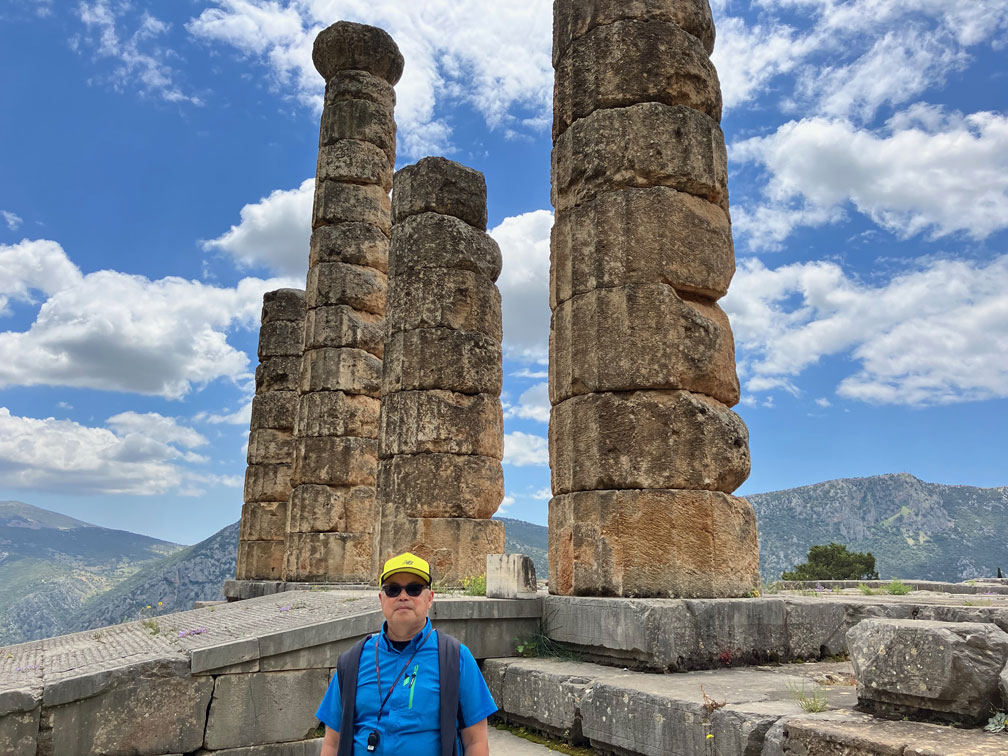
We’ll pass by the city of Thebes (Theva). Greece comprises 25 provinces, with Athens situated in the province of Attica. It’s now 9:34 AM, and the bus cruises along the nicely paved highway as we approach the next town.
At 10:02 AM, we approach the mountains and a lake with an exit toll plaza. I still have a good signal with WIND (4G LTE). Lake Yliki, a vital source of fresh water for Athenians, is visible on my right as the bus heads toward the mountains.
Per our tour guide, there are two underground rooms at the Oracle of Delphi – one for Pythia (the chief priestess) and the other for the rest of the high priests and priestesses.
We approach the city of Livadia (Livadeia) at 10:15 AM on the 2-lane roads of the divided highway. Mt. Helicon can be seen from here as well. In ancient Greek lore, it is the home of the 9 Muses and 3 Graces (beauty, harmony & symmetry).
By 10:23 AM, we’re almost at Livadia (pop. 20K), about 20 km from Delphi. Delphi was closed by the Byzantine emperor Theodosius around 393 BC, who introduced Christianity instead of paganism.
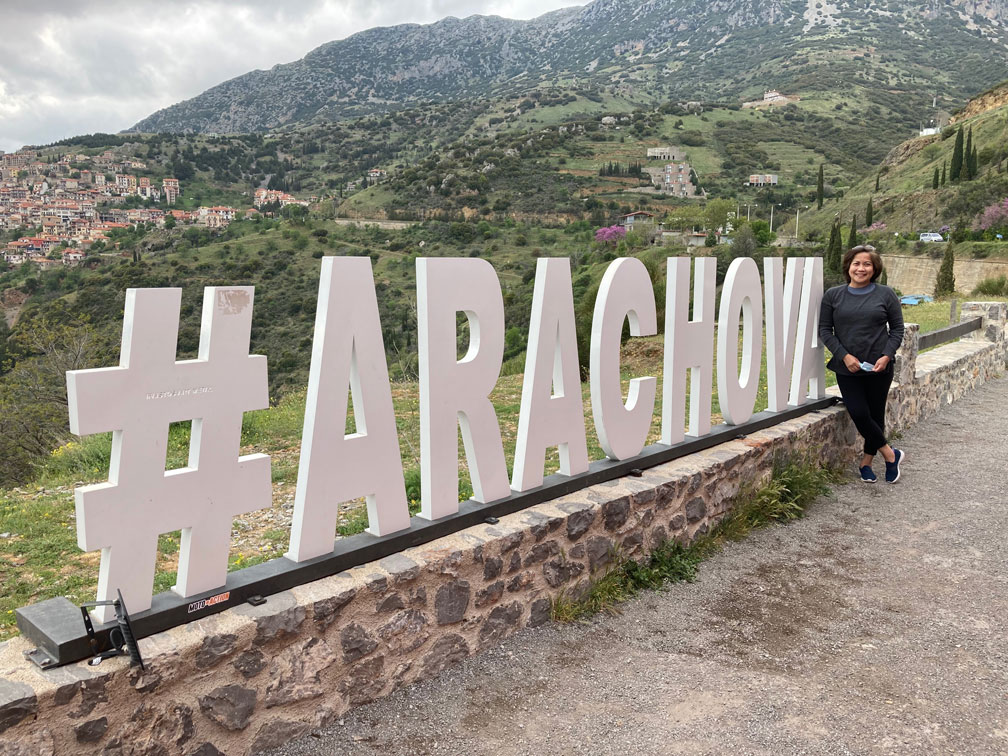
The surge in gas prices following Russia’s invasion of Ukraine in February prompted me to note that the current gas price in the area is €2.059 per liter (at a Shell gas station). This would equal about $8.39 per gallon back in the States. In the SFO Bay Area, regular gas (rated 89 octane) was about $5.60 per gallon when we left in late April, so I’m not going to complain.
By 10:32 AM, we stopped at the cafeteria (Tholos), also owned and operated by Key Tours, for 37 minutes.
We had two coffees, cookies, and a pizza wrap at the appropriately named café, which has a circular structure and vaulted ceiling. I was back on the bus at 11:04 AM. Inside the café, I also found a thin guidebook about the Oracle of Delphi, priced at €10, which I found a bit expensive.
We left the café at 11:09 AM and drove through two (2) short tunnels as we approached Delphi. A small town popular with skiers during the winter would greet us after passing through the second. That would be Arachova.
From our guide through the P/A: “Croesus (Kroisos for the Greeks) was king of Lydia. He consulted the Oracle to ask if he could win his war with Cyrus the Great of Persia. The Oracle gave him a vague answer: “A great empire would fall if he attacked.” Thinking that the “great empire” was Persia, Croesus underestimated his enemy and lost to Cyrus the Great.”
The ancient Greeks also consulted the Oracle about the best places to establish new colonies or cities. Modern-day examples would be Syracuse in Italy (Great Greece), Iona (off western Scotland), Ephesus (Turkey), Philadelphia (off the Aegean region of Turkey), Marseille (aka Massalia in France), Barcelona (Spain), and Odessa (Russia).
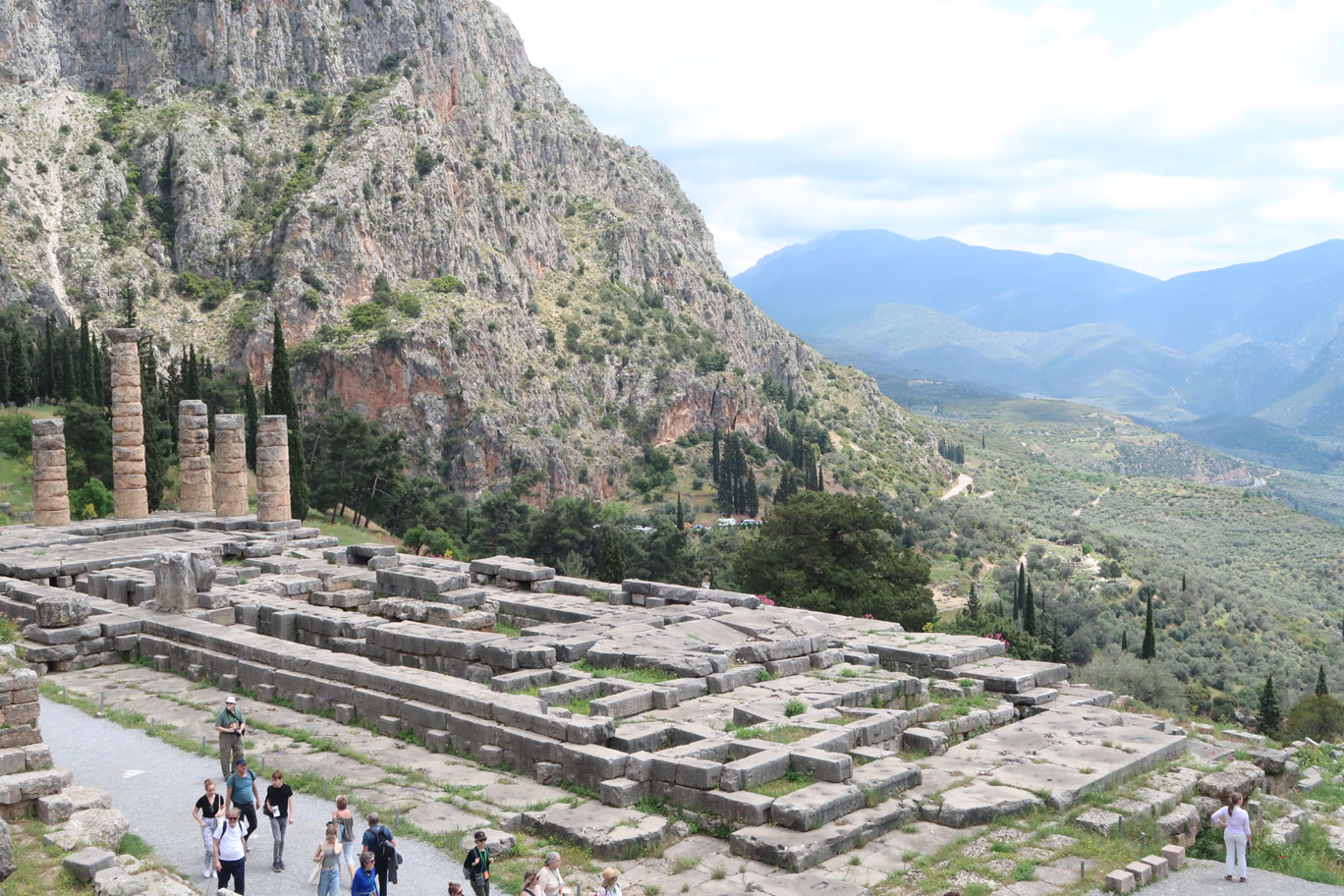
Delphi is also where the ‘omphalos‘ (navel) can be found. The ancient Greeks considered it the ‘center of the world’, set upon by the god of gods, Zeus.
It’s now 11:25 AM as our bus cruises along the Parnassos mountains. Rocks become deeper in color as we go higher. Aluminum and bauxite abound in the area. We approach the village of Arachova, known as the “balcony of Mt. Parnassos.”
Arachova is a quaint ski town with a monument to the inventor of the ‘pap smear‘ – Georgios Papanikolaou.
The bus went down the slope to get to the site of the Oracle ruins. It’s now 11:38. COVID vaccination cards might be required at the museum.
The location is truly spectacular despite its age of more than 2500 years. The ancient Greeks knew how to choose the sites for all the gods they venerated.
The museum in Delphi is a treasure trove of ancient Greek artifacts that would be the envy of all the biggest, well-known museums in the world. I am not a fan of museum visits, but what I saw in Delphi brought back the same question: “Did they do all these more than 2,500 years ago?” They were truly spectacular.
After the museum visit inside Delphi, the bus took us further north for lunch in a low-slung restaurant with the Greek name, ‘Symposium‘.
We stayed at the restaurant for over an hour, enjoying our prepaid lunch, except for the drinks. We were seated at a table for 4, which was perfect. After we had ordered our drinks, our food arrived. We had bread, appetizers of ‘spanakopita’ & zucchini fritters, a small plate of salad, and chicken with saffron-infused rice (it tasted like the Philippine version of ‘adobo’), and dessert of revani (orange/lemon cake), which was, ironically, named after a Turkish poet.
The bus left the restaurant at 3:47 PM. It stopped again at a down-sloping area where our tour guide went down and asked those who liked to see the vista point, where ancient Greek athletes and soldiers trained in Delphi because of its high altitude.
Many of us got off the bus, eager not to miss this once-in-a-lifetime opportunity, and followed Mariana down a small path that led to a clearing. There, remnants of a magnificent, circular building and rows of massive boulders neatly arranged came into view.
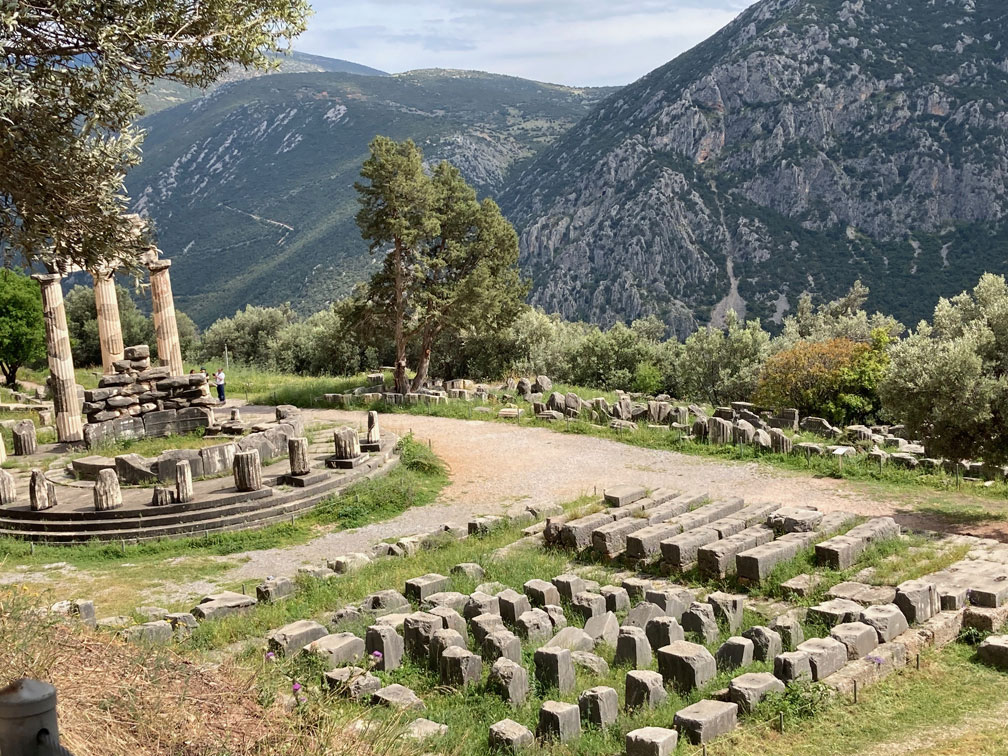
These training grounds can also be seen from the Oracle, but at a distance and partly obstructed by trees. There was also a stream and a hot spring nearby where the athletes and soldiers supposedly soaked their tired bodies after training.
After our phones and cameras had done their jobs and we returned to the bus, I tried to get some sleep. By this time, my bad left foot was hurting.
Again, the bus stopped at a vista point in the village of Arachova, where my sister, Ellen, and Ruby posed before the modern, all-white signage of the town. Don and I did not leave the bus as the former was already deep in slumber in his seat, while I was tired after the steep, up-and-down walks in Delphi. This would be the penultimate stop of the trip.
At 4:50 PM, the bus headed back to Athens. I tried to get some rest for the early trip to the Greek Cyclades the next morning, but the fantastic views along the Greek countryside that fine afternoon just won’t let me.
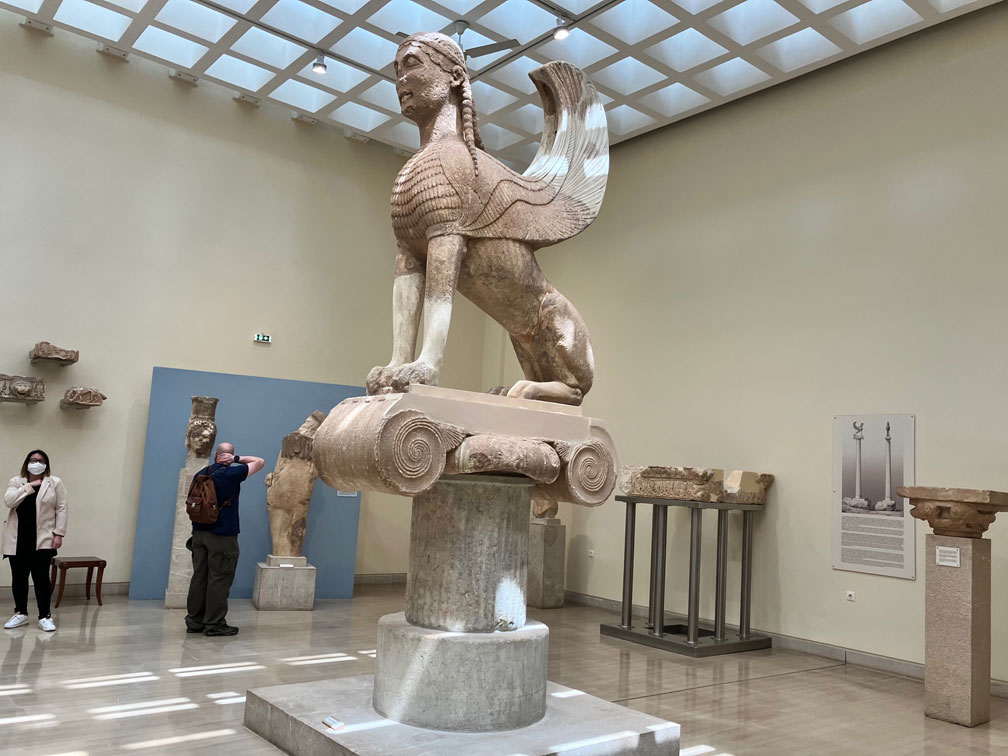
The last stop to use the WC (restroom) was from 5:50 to 6:00 PM before the final drive to Athens. I got up and used the restroom inside a food court with a burger joint and a mini-mart. The bus left at 6:03 PM. The weather cooled down as we cruised slowly back towards Athens.
It is now 6:07 PM, and there’s still sunlight for a day that started with much promise. The tour was lovely, informative, and, overall, worth the price that we paid.
I had long dreamt of and prayed to the gods—or God in the religion I had known since I was a child—of visiting the Oracle of Delphi, and on that fine day of May 2022, I realized that dream.
More than 2500 years ago did not seem to be that distant.

